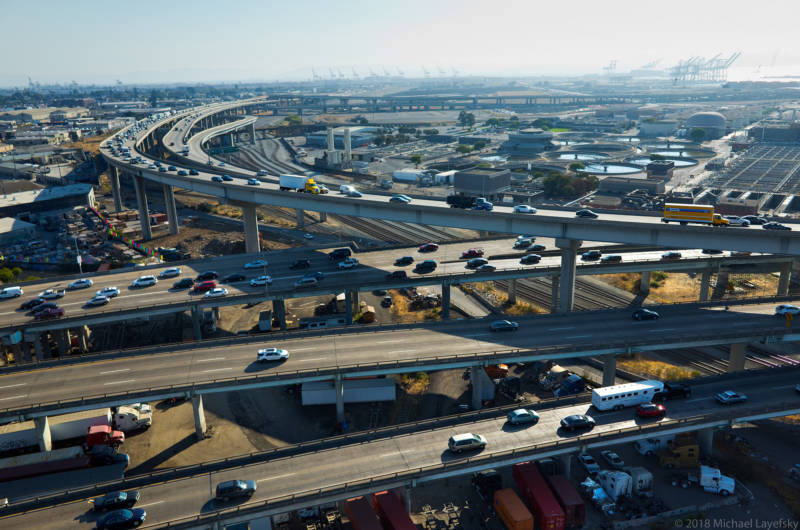This story includes a correction.
A Caltrans plan to rebuild portions of the MacArthur Maze to accommodate larger trucks has hit a roadblock, for now, in the form of angry local officials and community groups who say the agency failed to tell them the project was coming and performed only a cursory study of its potentially far-reaching environmental effects.
Caltrans announced earlier this week that it is “pausing” its planning for the project, a decision that came after hearing from Oakland and Emeryville officials and others who are questioning whether the project is even necessary.
John Bauters, an Emeryville city councilman who serves on the Alameda County Transportation Commission, said he first learned of the proposed Maze work in early March through a Caltrans mailing for a public meeting to explain the project — an announcement that arrived a week after the meeting.
Bauters said he called Oakland Mayor Libby Schaaf and officials with several other agencies — none of whom, he said, knew about the project.
“I couldn’t find a single person at a single public agency affected by this in Alameda County or representing the region who was aware of Caltrans doing work on this project,” Bauters said in an interview Tuesday.
Schaaf, a member of the Metropolitan Transportation Commission, said Wednesday she was “furious” when she learned what Caltrans was planning.
“No one had reached out to me, either as the mayor or as an MTC commissioner,” she said.
In January, Caltrans issued an initial study and environmental assessment of the project, which the agency says could cost as much as $191 million and take up to three years to complete after a projected start date in 2022.
The agency says the project aims to increase vertical clearance at several points of the web of overpasses, which handle about 250,000 vehicles a day at the point where Interstates 80, 580 and 880 meet.
The initial study includes a proposed “negative declaration,” meaning the assessment concluded that there was no substantial evidence the project would have a significant effect on the environment.
But Bauters, Schaaf and others say that Caltrans’ preliminary study of the project, which could lead to partial closure of parts of the Maze and shunt traffic onto streets in Oakland and Emeryville, fails to analyze a wide range of predictable impacts on traffic, air quality, pedestrian and cyclist safety, and local businesses.
